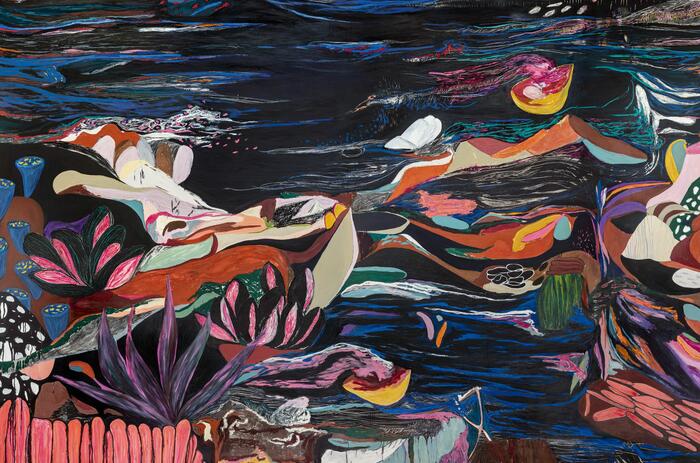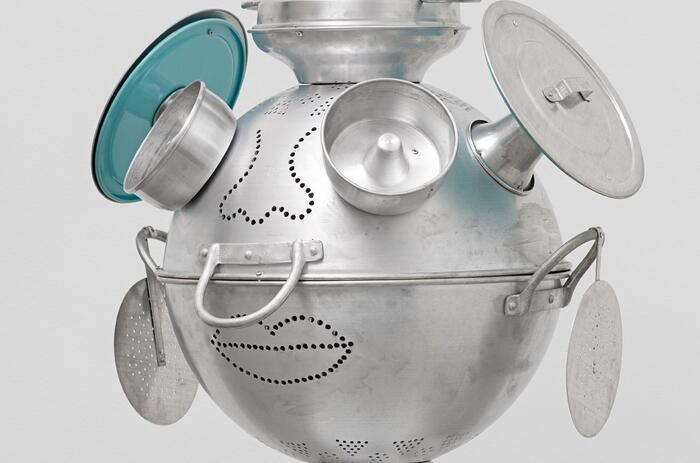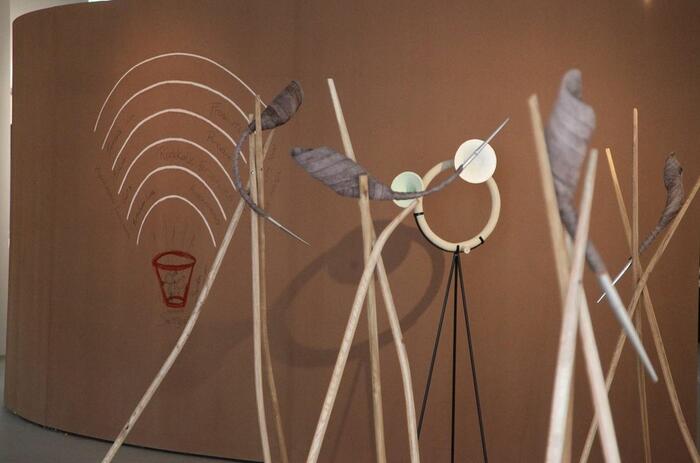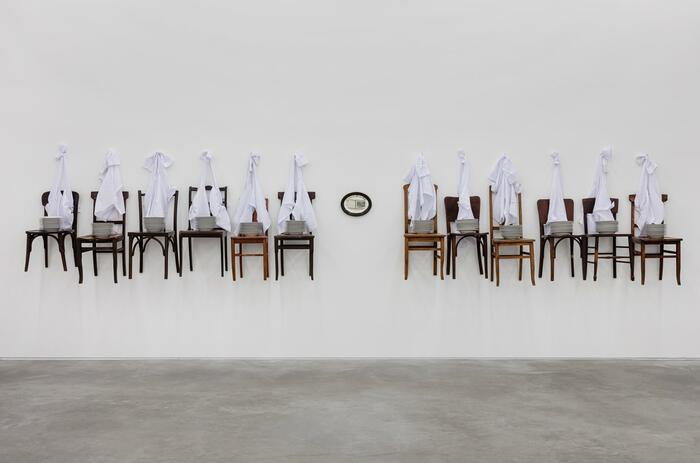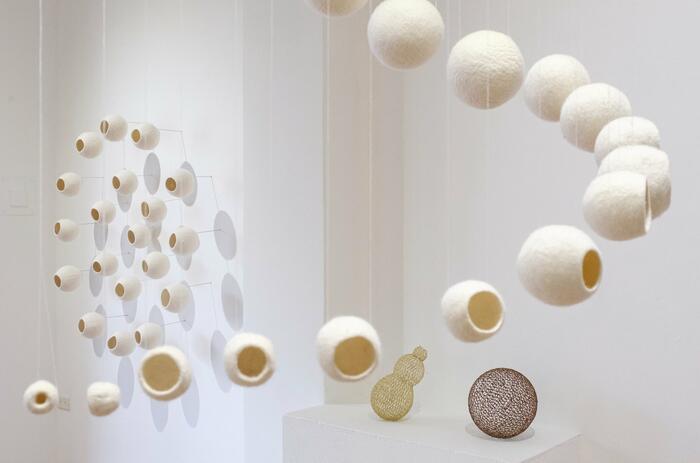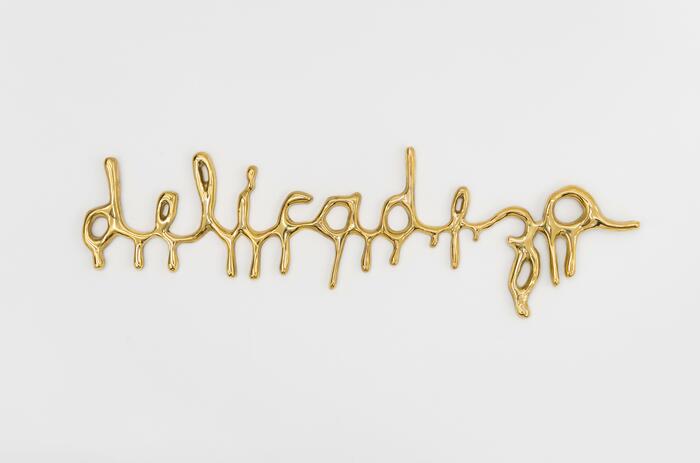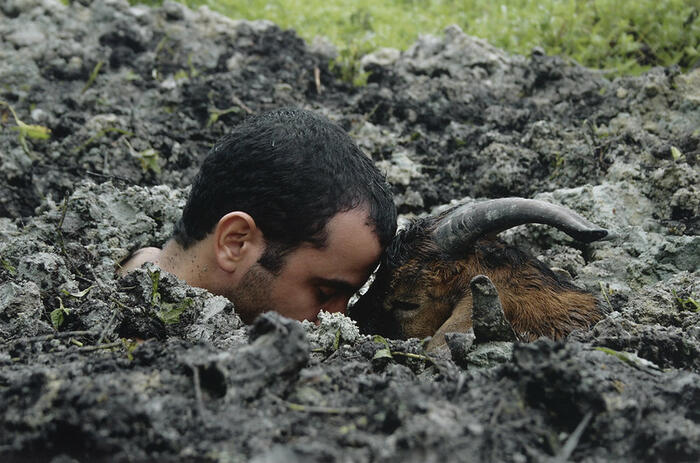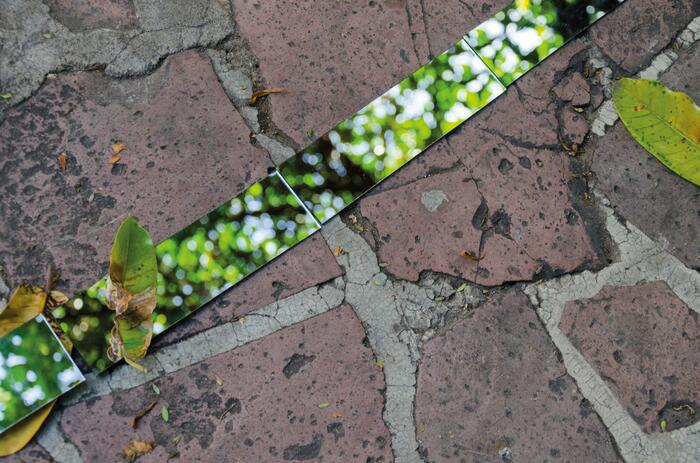THE COLLECTIVE EXHIBITION AT FONTE RESIDENCY
Melodia is a collective exhibition at Fonte residency featuring a compendium of distinctively composed artworks. Through a variety of processes, techniques, and multidimensional approaches, the exhibition poses the question: What if these diverse works formed a melody?
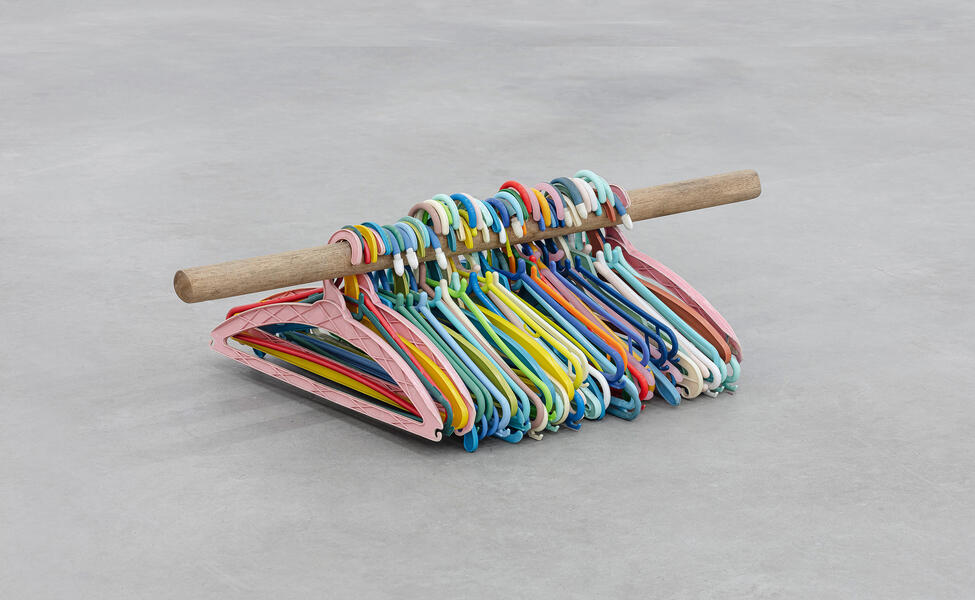
The exhibition showcases works by Arthur Palhano, Brisa Noronha, Fabio Perino, Marcelo Amorim, Marina Weffort, Nino Cais, and Zé Tepedino. According to the curator Domenico De Chirico, this melody resounds with a dual ardor. The first arises from the unique creative impulse of each artist, while the second imparts a whispering organic unity, a "trait d'union", to the collective body of exhibited artworks.
Arthur Palhano.
“Through my practice, I investigate the symbolic interplay between objects and the pictorial construction through exercises of subtraction, scraping, and excavation, peeling back the various sensitive layers of my painting, engaging with a public dimension of a certain vandalism of the city's remnants and the canons of art history”.
-
Obra de Artur Palhano.
Brisa Noronha.
“My work is characterized by exploring the delicate relationships and resistance of matter, seeing it as an active subject in the creative process. My experiments are built through my action as an artist, but also through the uncontrollable response of materials, revealing their sensitive life. My artistic procedures incorporate both intentionality and the unexpected element, shifting the notion of failure or error into a kind of pedagogy of matter. In this approach, one can witness the constant processes of material restructuring, which are vital for the continuity of any living organization. As an artist, I strive to be attentive to the physical qualities of what I observe, being interested in the arrangement of objects in everyday scenes and in the structuring of systems that stimulate my experimental research on the transformation of materials, their agency, and their limits. My work unfolds across different mediums, such as paintings, videos, photographs, and, especially, porcelain”.
-
Obra de Brisa Noronha.
Fabio Perino.
“My artistic journey questions certain universally accepted truths and explores the contradictions raised by them. The elements of point and line, originally treated in previous works, are now dematerialized and stripped of their physical characteristics. What was once synthesized and compressed into a geometric element now expands into an unlimited dimension. While previously the line allowed us to perceive tension beyond the sensible world and the point implied a more human will associated with a more comprehensible reality, attention now turns to the incoherence and imbalance of human nature, which in its ambition to overcome the primitive act of creation is destined to oppose what it is part of. The sequence of dialogue in the pieces repeats to highlight the relationship between the human tendency toward the transcendental or universal and the objective and concrete reality of existing in this world, albeit with a constant presence of irrational elements that aim to elevate the democratic brutality of our contemporary world. The dialogue evolves from smooth and polite to something more violent and raw, without many filters other than the essential, free, and partially infinite capacity of the human being to rely on imagination and reason”.
Marina Weffort.
“I have always been interested in woven materials. I remember learning to cut fabric by removing a thread from its weave as a child. Many years later, this gesture became definitive in the construction of my poetics. Fabric is composed of a structure of threads that cross each other orderly. The actions of cutting and unraveling, sewing and stretching, always present, reveal a sculptural procedure to what may seem initially two-dimensional. The works, mostly in light colors, are stretched on the wall, causing their shadow to be incorporated into the image of the artwork. The subtle interplay of light and shadow intersects the drawing of the new weave, while also infusing it with air, forming a kind of perforated box of lines, responsive to the slightest breath. The rarefaction of the surface and its visual and physical fragility contribute to its dissolution in space. This relationship with space and light, which permeates the fabric's weaves, demands from the viewer a constant effort to embody these boundary structures”.
-
Obra de Marina Weffort
Marcelo Amorim.
“My work questions the rhetorical existence of a neutral masculinity and the legitimation of male power in Western societies through the repetition of certain discursive images. I use the internet to collect anonymous photos and films, mainly from the 1940s to the 1970s, and act as an editor, rescuing forgotten images. I organize and recreate these images in various languages, such as serigraphy and oil painting, in order to simulate an affective sense. Through this process, I seek to evoke critical awareness from an atmosphere that appears nostalgic, intimate, and familiar”.
Nino Cais.
“I seek to create an intermediate universe between the everyday world, which provides the raw material for my work, and a fantastical environment rooted in literature, theater, and visual arts. I cut, paste, sew, draw; I am both inside and outside the artwork, a character and an author. My works manifest in a suspended time and space, recognizable yet unexplored by the viewer, so close and yet so far, aiming to create a strangeness that is also welcoming”.
Zé Tepedino.
“My work begins with careful observation of my surroundings, the crossing of a city that meets the sea. From this daily journey, materials, spaces, and situations are selected, most of which are banal, to be poetically revisited, reorganized, and highlighted. Through thought that composes and accompanies the tradition of art history movements, I recombine these various items through mostly simple operations, creating new arrangements, offering a fresh perception of what we know all too well. Regardless of the medium, I always understand my work as an action, whether in the landscape with large installations or in monotypes on paper. To achieve this, I employ different techniques such as sewing, painting, and sculpture, seeking to formalize ideas that always involve the process as a co-author. I aim to bring different times and traditions closer together, proposing a new perspective on the world that surrounds us”.
-
Obra de Zé Tepedino.

